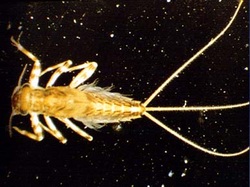
Aside from the intra and interspecific divergences being accurate, for the most part, this paper further points out that DNA barcoding is particularly useful for other reasons. In addition to helping streamline the identification, delimitation, and discovery of species, DNA barcoding also gives consistent results across life stages, which is particularly important in aquatic ecology applications, as a large majority of benthic macroinvertebrates are immature. In many cases, taxonomy is based on adult male morphology, and identification of immatures, particularly early instars, is exceedingly time-consuming and requires substantial training. Additionally, specimens are often very tiny, and delicate, which can lead, in many cases, to missing gills, caudal filaments or even legs, which can in turn further complicate accurate identifications. Furthermore, the use of DNA barcoding allows for data standardization, and thus a broader, more accurate comparison of results.
This paper also suggested that much more work on North American Ephemeroptera taxonomy and classification is required, as many currently recognized species are highly divergent. Most of these confused species have complex histories of synonymy and reflect the 60 year trend in North American mayfly systematics towards inclusive species concepts. Further taxonomic work that synthesizes a variety of identification and classification methods including morphological, biogeographic, ecological, behavioral and molecular techniques is required to test current species hypotheses, particularly of those unusually divergent Ephemeroptera species. DNA barcoding is one of the techniques that will be useful in this aim of achieving stable, supported species hypotheses. Re-examined and updated species hypotheses will allow us to identify aquatic insects more accurately and more efficiently, which will in turn allow us to determine and communicate the ecological characteristics of a species, such as phenology and tolerance to pollutants, and thus improve our ability to utilize these organisms in bioassessment programs.
Natalie Stauffer
 RSS Feed
RSS Feed
